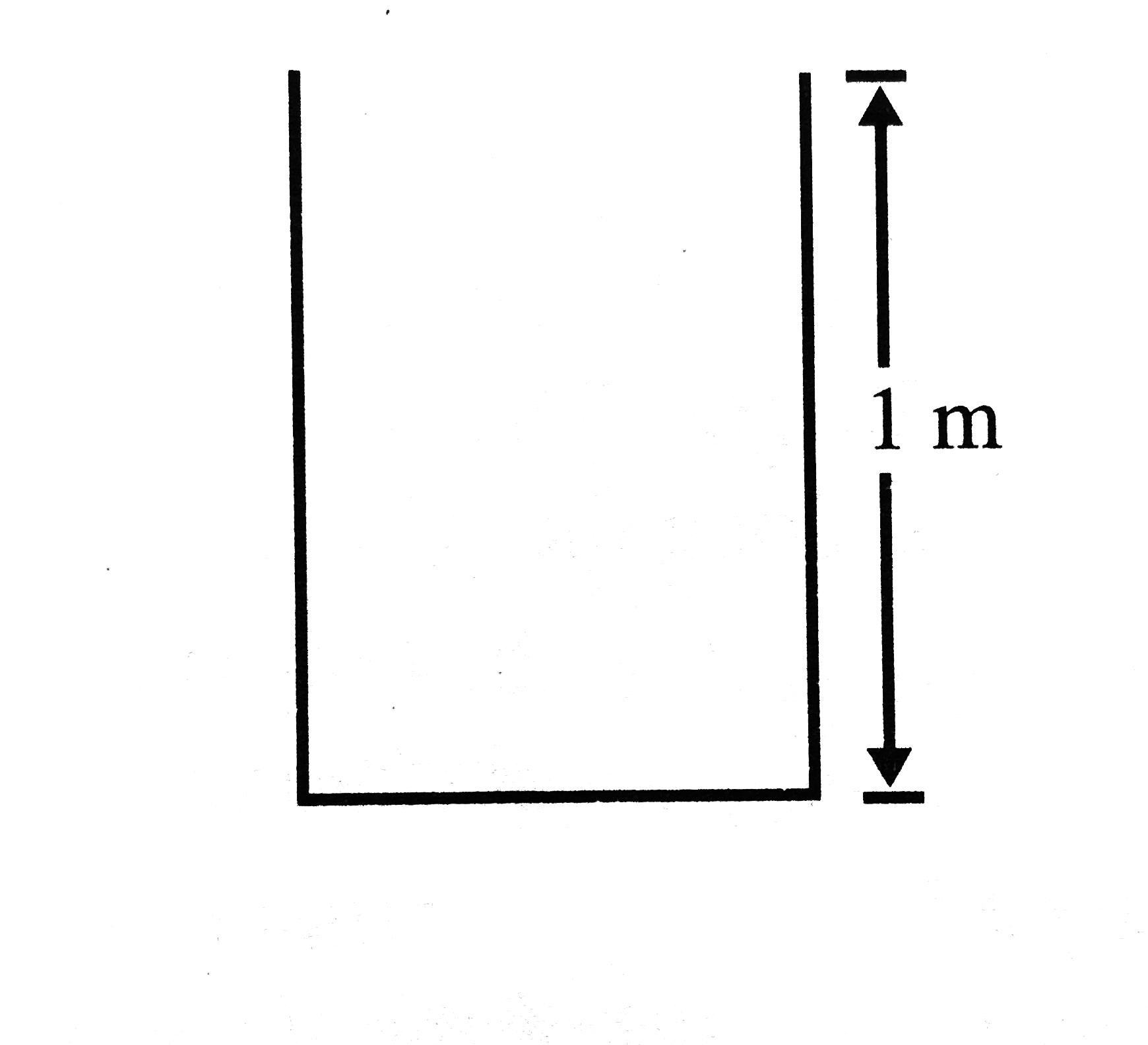A source of sound attached to the bob of a simple pendulum execute SHM . The difference between the apparent frequency of sound as received by an observer during its approach and recession at the mean frequency of the source . The velocity of the source at the mean position is ( velocity of sound in the air is 340m/s)
[Assume velocity of sound << velocity of sound in air ]
(a)1.4m/s
(b)3.4m/s
(c)1.7m/s
(d)2.1m/s
The correct Answer is:B
To solve the problem, we need to analyze the situation where a source of sound is attached to a simple pendulum executing simple harmonic motion (SHM). The observer perceives different frequencies of sound during the approach and recession of the pendulum.
1. Understanding the Doppler Effect:
When the source of sound moves towards the observer, the frequency increases, and when it moves away, the frequency decreases. We denote:
- f0: the natural frequency of the source.
- v: the speed of sound in air (given as 340m/s).
- v0: the velocity of the source at the mean position.
2. Apparent Frequencies:
The apparent frequency when the source approaches the observer is given by:
f1=f0v+v0v
The apparent frequency when the source recedes from the observer is given by:
f2=f0v−v0v
3. Difference in Frequencies:
The difference between the apparent frequencies during approach and recession is:
f1−f2=f0(v+v0v−v−v0v)
Simplifying this, we get:
f1−f2=f0((v+v0)−(v−v0)v)=f0(2v0v)
4. Given Condition:
According to the problem, the difference in apparent frequency is 2% of the natural frequency:
f1−f2=0.02f0
Setting the two expressions for the frequency difference equal gives:
f0(2v0v)=0.02f0
5. Canceling f0:
Since f0 is not zero, we can cancel it out:
2v0v=0.02
6. Solving for v0:
Rearranging gives:
2v0=0.02v
v0=0.02v2=0.01v
Substituting v=340m/s:
v0=0.01×340=3.4m/s
Final Answer:
The velocity of the source at the mean position is 3.4m/s.
---
When the source of sound moves towards the observer, the frequency increases, and when it moves away, the frequency decreases. We denote:
- f0: the natural frequency of the source.
- v: the speed of sound in air (given as 340m/s).
- v0: the velocity of the source at the mean position.
The apparent frequency when the source approaches the observer is given by:
f1=f0v+v0v
The apparent frequency when the source recedes from the observer is given by:
f2=f0v−v0v
The difference between the apparent frequencies during approach and recession is:
f1−f2=f0(v+v0v−v−v0v)
Simplifying this, we get:
f1−f2=f0((v+v0)−(v−v0)v)=f0(2v0v)
According to the problem, the difference in apparent frequency is 2% of the natural frequency:
f1−f2=0.02f0
Setting the two expressions for the frequency difference equal gives:
f0(2v0v)=0.02f0
Since f0 is not zero, we can cancel it out:
2v0v=0.02
Rearranging gives:
2v0=0.02v
v0=0.02v2=0.01v
Substituting v=340m/s:
v0=0.01×340=3.4m/s
The velocity of the source at the mean position is 3.4m/s.
Topper's Solved these Questions
- BOOK - CENGAGE PHYSICS ENGLISHCHAPTER - SUPERPOSITION AND STANDING WAVESEXERCISE - Multiple26videos
SUPERPOSITION AND STANDING WAVES
- BOOK - CENGAGE PHYSICS ENGLISHCHAPTER - SUPERPOSITION AND STANDING WAVESEXERCISE - Assertion - Reasoning6videos
SUPERPOSITION AND STANDING WAVES
- BOOK - CENGAGE PHYSICS ENGLISHCHAPTER - SUPERPOSITION AND STANDING WAVESEXERCISE - Subjective24videos
SUPERPOSITION AND STANDING WAVES
- BOOK - CENGAGE PHYSICS ENGLISHCHAPTER - SOUND WAVES AND DOPPLER EFFECTEXERCISE - Integer16videos
SOUND WAVES AND DOPPLER EFFECT
- BOOK - CENGAGE PHYSICS ENGLISHCHAPTER - THERMODYNAMICSEXERCISE - 241videos
THERMODYNAMICS
Similar Questions
A source of sound attached to the bob of a simple pendulum execute SHM the difference between the apparent frequency of sound as received by an observer during its approach and recession at the mean position of the SHM motion is 2% of the natural frequency of the source the velocity of the source at the mean position is (velocity of sound in the air is 340m/s) [Assume velocity of sound source ≤≤ velocity of sound in air]
View SolutionThe velocity of sound in air is 340ms. If the density of air is increased to 4 times, the new velocity of sound will be
View Solution
Knowledge Check
- Question 1 - Select One
The difference between the apparent frequency of a source of sound as perceived by the observer during its approach and recession is 2% of the natural frequency of the source. If the velocity of sound in air is 300 m/s, the velocity of the source is
A6 m/sB3 m/sC1.5 m/sD12 m/s - Question 2 - Select One
Assertion : The sound emitted by the source travels in all directions.
Reason : The relative velocity of sound with respect to the observer is the sum of velocity of sound and velocity of observer.AIf both assertion and reason are true and reason is the correct explanation of assertion.BIf both assertion and reason are true but reason is not the correct explanation of assertion.CIf assertion is true but reason is false.DIf both assertion and reason are false.
The ratio of the apparent frequencies of a car when approaching and receding a stationary observer is 11:9 What is the speed of the car, if the velocity of sound in air is 330 m/s?
View SolutionWhat is the fundamental frequency of an open organ pipe of length 42.5 cm, if the velocity of sound in air is 340 m/s?
View SolutionThe velocity of sound in air at 27∘C is 330 m/s. the velocity of sound when the temperature of the gas is raised to 227∘C is
View SolutionA source emits sound of frequency 600Hz inside water. The frequency heard in air will be equal to (velocity of sound in water=1500ms, velocity of sound in air=300(m)/(s))
View SolutionA source of sound is travelling towards a stationary observer. The frequency of sound heard by the observer is 25% more that the actual frequency. If the speed of sound is v, that of the source is
View SolutionVelocity of sound in air is 320m/s. The resonant pipe shown in Fig. 7.81 cannot vibrate with a sound of frequency .
 View Solution
View Solution

